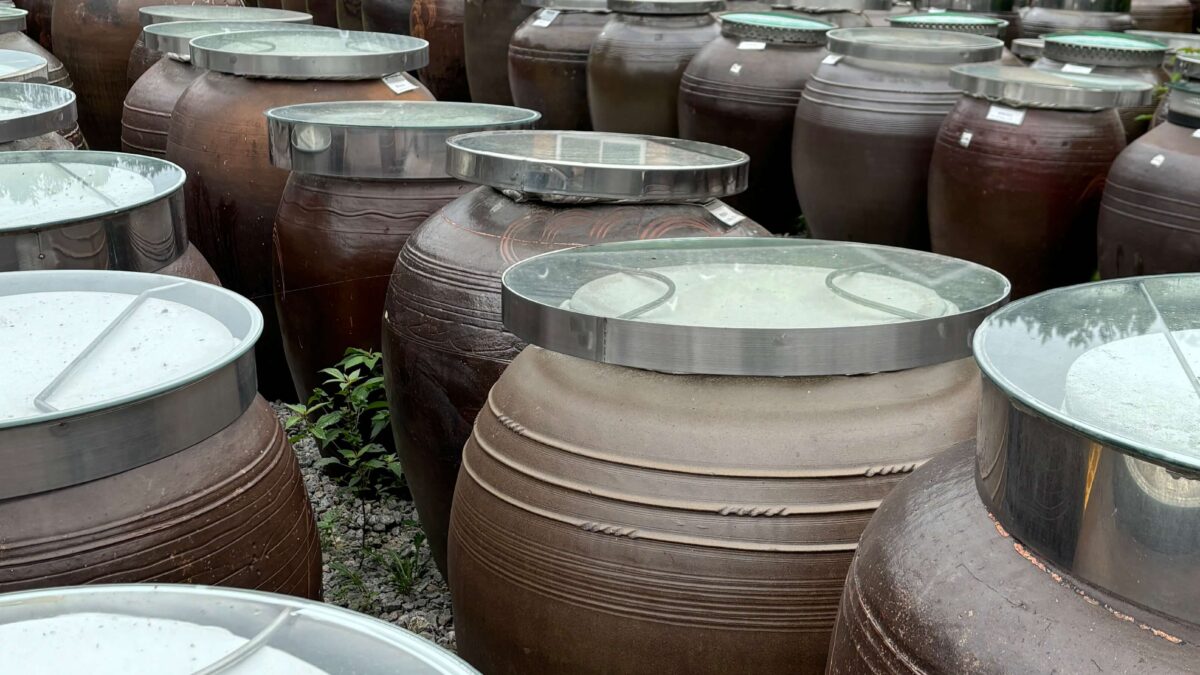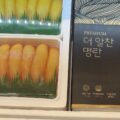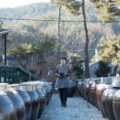Doenjang: the Soul of Korean Stews

The Unsung Hero of Korean Flavor
While gochujang steals the spotlight with its fiery red hue, doenjang (된장) — Korea’s fermented soybean paste — is the quiet heart of Korean cooking.
Rich, earthy, salty, and deeply umami, doenjang forms the foundation of traditional Korean flavor, appearing in soups, stews, sauces, and temple meals alike.
It’s not just an ingredient — it’s a living link to Korea’s agrarian roots, ancestral rituals, and the philosophy of patience and harmony through fermentation.
A Thousand-Year Tradition in a Clay Jar
Doenjang’s story stretches back over 2,000 years — long before chili peppers or modern condiments existed.
Historical records from the Three Kingdoms period (around the 4th century) already mention “jang”, a general term for fermented soybean pastes and sauces.
Ancient Koreans learned to ferment soybeans with salt and air, producing meju — solid blocks of soybeans that were dried, hung with straw, and aged through winter.
In spring, the meju was soaked in brine, and as it fermented, it naturally separated into two treasures:
¤ Soy sauce (ganjang) — the liquid layer.
¤ Doenjang — the thick, flavorful sediment.
This dual birth gave rise to one of Korea’s proudest culinary traditions: “jang culture” — the art of fermentation that shaped the nation’s entire cuisine.
An Intimate Part of Village Life
Until recent decades, every Korean household made its own doenjang.
Families gathered in early winter to boil soybeans, pound them into meju blocks, and hang them under the eaves to dry — a ritual full of meaning.
Even the straw ropes used to hang meju symbolized protection against evil spirits, while the winter air purified the beans.
In spring, the earthen jars (onggi) would be opened to the sun, and grandmothers would test the aroma — a blend of earth, salt, soy, and time — to judge its readiness.
A well-aged doenjang was more than food; it was a measure of a household’s care and harmony.
Koreans even had a saying:
“The taste of a house comes from its doenjang.” (집된장 맛이 그 집 맛이다)
The Alchemy of Ingredients
True doenjang is made from just three ingredients — soybeans, salt, and water — but its transformation is almost magical.
¤ Soybeans are boiled, crushed, and shaped into blocks (meju).
¤ Straw and air introduce natural microorganisms that begin the fermentation process.
¤ Brine is added, and the mixture ferments for several months in onggi jars, breathing with the seasons.
Over time, enzymes break down the soy proteins into amino acids, peptides, and sugars, creating the unmistakable savory umami depth that industrial shortcuts can never replicate.
Flavor Profile: The Essence of Umami
Doenjang has a robust, earthy, salty, and slightly bitter flavor — richer and deeper than Japanese miso.
Where miso tends to be mild and sweet, doenjang carries a wild, rustic strength — reflecting Korea’s mountainous climate and rural traditions.
Its taste changes over time: young doenjang is lighter and saltier; aged doenjang becomes darker, more concentrated, and filled with complex umami notes.
It’s the secret behind doenjang jjigae (soybean paste stew), ssamjang (grilled meat dipping sauce), and namul (seasoned vegetables).
Doenjang in Korean Philosophy and Medicine
In traditional Korean thought, doenjang is considered a healing food — balancing body and mind.
Fermented foods like doenjang were believed to purify the body, aid digestion, and strengthen the immune system, especially during the harsh winters.
Korean Buddhist temples still produce temple doenjang, aged for years in mountain air, and monks view it as a sacred, meditative food — simple, unadorned, and deeply nourishing.
Modern nutrition backs this up: doenjang is rich in isoflavones, probiotics, and amino acids, supporting gut health and longevity.
It’s no coincidence that Koreans, historically among the world’s healthiest populations, have long consumed jang daily.
Cultural Anecdotes and Rituals
In the Joseon dynasty, a well-made doenjang was a mark of virtue for women — homemakers were praised for maintaining the right temperature and timing of their fermentation jars.
Korean families often shared jars of doenjang as gifts of friendship or marriage, symbolizing trust and continuity.
When a jar accidentally spoiled, elders said it reflected the household’s emotional imbalance — linking food’s purity to human harmony.
Even today, rural Koreans will cover their jang jars with straw hats or cloths to “protect” them — as if they were living beings.
Regional and Modern Variations
Each region of Korea has its own version of doenjang, shaped by its climate and ingredients:
¤ Sunchang Doenjang — mild, sweet, and balanced (from Jeolla Province).
¤ Andong Doenjang — stronger, saltier, and deeply fermented.
¤ Gangwon Doenjang — mountain-style, earthy, and rustic.
Today, artisanal producers and urban chefs are reviving slow fermentation methods, creating “vintage” doenjang aged for 3 to 5 years.
Meanwhile, vegan and low-sodium versions have gained popularity, introducing doenjang to a global audience eager for clean, plant-based umami.
Doenjang vs. Miso: A Common Confusion
Although both doenjang and Japanese miso are fermented soybean pastes, their ingredients, fermentation methods, and flavors differ significantly, reflecting the unique culinary philosophies of Korea and Japan.
Japanese Miso:
¤ Made from soybeans combined with rice or barley koji (a fermentation starter containing Aspergillus oryzae), plus salt.
¤ The koji enzymes break down starches and proteins, producing a paste that is smoother, slightly sweet, and less intensely salty than doenjang.
¤ Miso is often aged for a shorter period (weeks to a few months for lighter varieties; up to a year for darker miso).
¤ Texture is generally uniform and creamy, which makes it ideal for delicate soups like miso soup or marinades that emphasize subtlety.
Korean Doenjang:
¤ Made primarily from fermented soybeans (meju) and salt, sometimes with a small amount of brine, without the addition of koji or cereal grains.
¤ Fermentation occurs over months or even years in earthenware jars (onggi), exposed to natural microbes and seasonal temperature changes.
¤ The resulting flavor is earthy, bold, salty, and deeply umami, often described as more complex and rustic than miso.
¤ Texture is typically coarse, grainy, and hearty, giving Korean stews like doenjang jjigae their characteristic body and depth.
Doenjang in the Modern World
From Seoul’s Michelin-starred kitchens to vegan cafés in Los Angeles, doenjang is making a global comeback.
Chefs use it to marinate mushrooms, enrich broths, or even flavor desserts, inspired by its deep umami.
In the age of wellness and sustainability, doenjang embodies everything modern eaters crave — natural fermentation, minimal ingredients, and ancient wisdom.
Doenjang is not just a paste — it’s a philosophy in a jar.
It teaches patience, respect for nature, and the beauty of slow transformation.
Every spoonful holds the rhythm of Korea’s seasons, the scent of earthen jars, and the memory of countless hands that stirred and waited.
In a fast-changing world, doenjang remains what it has always been — a timeless expression of Korean soul and simplicity.



